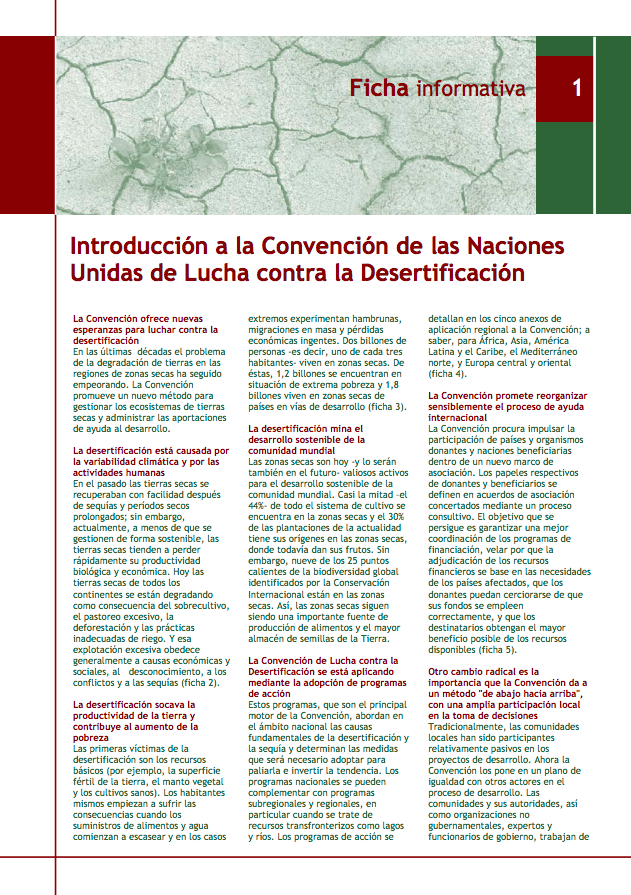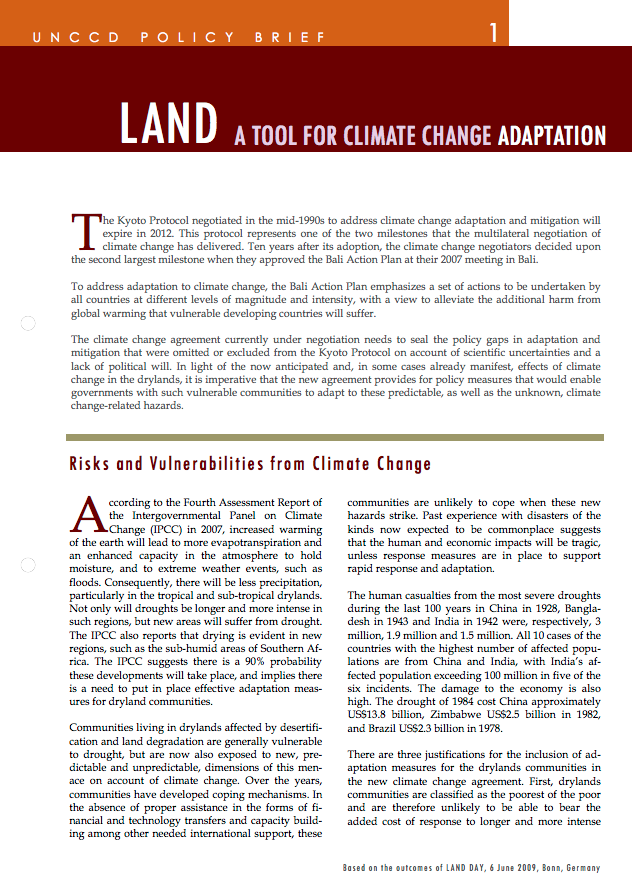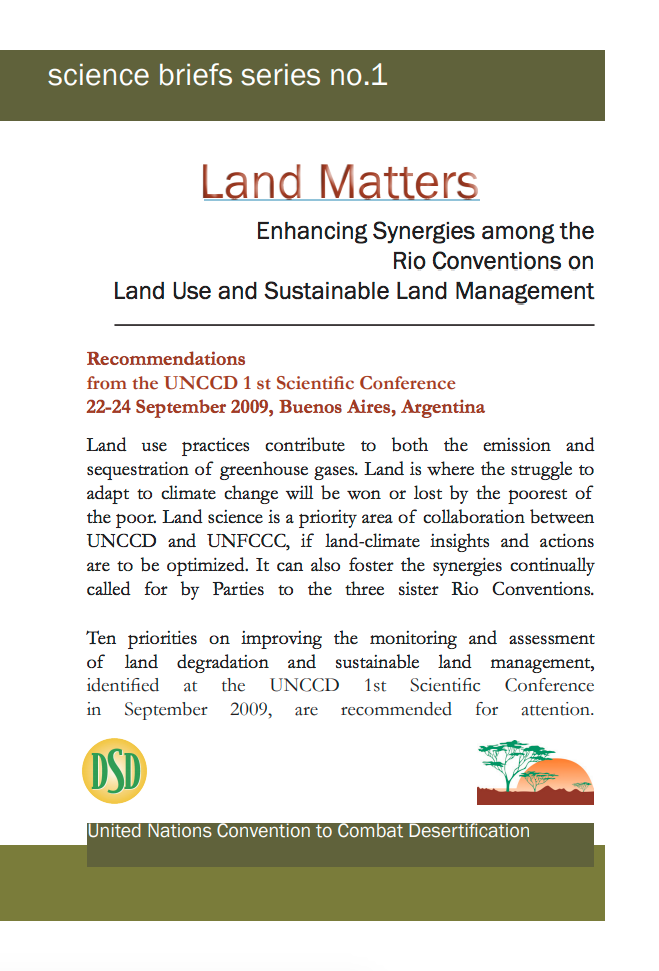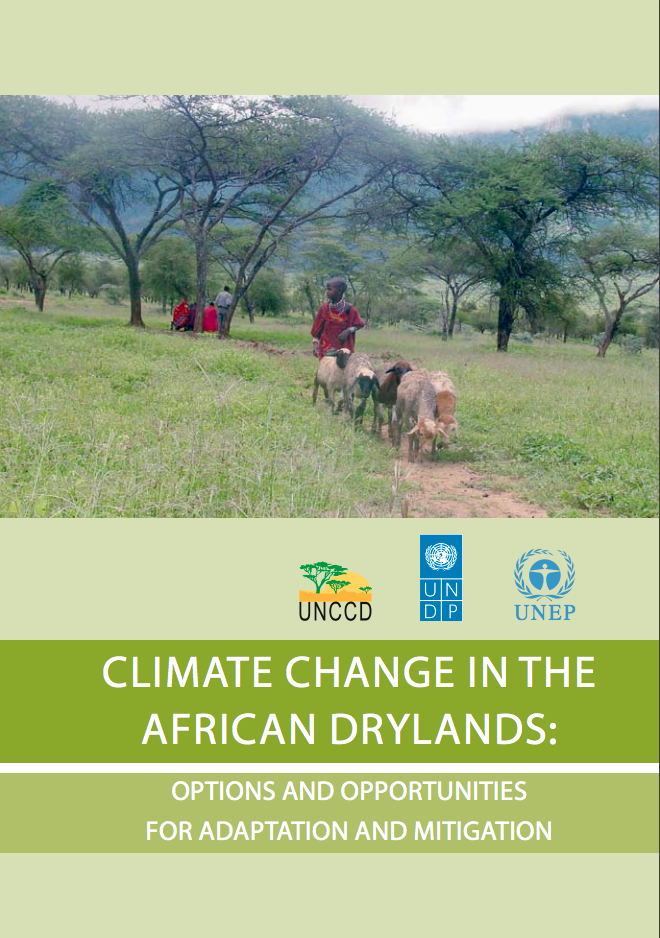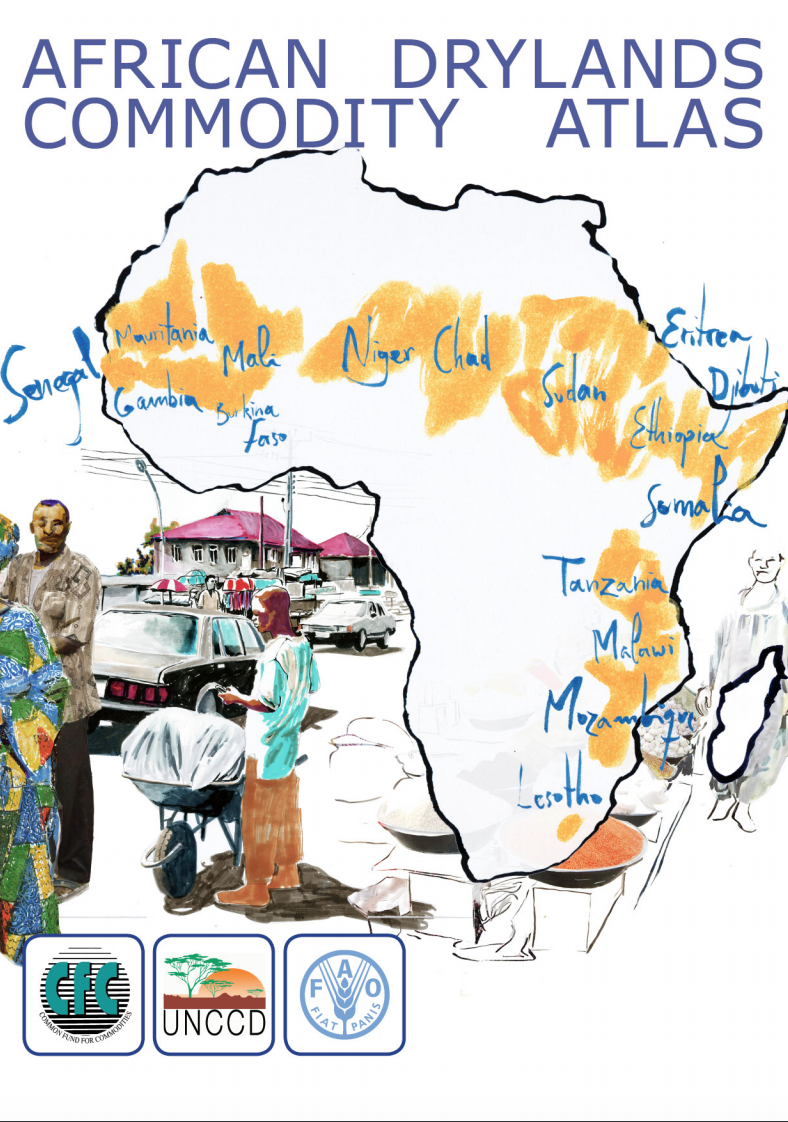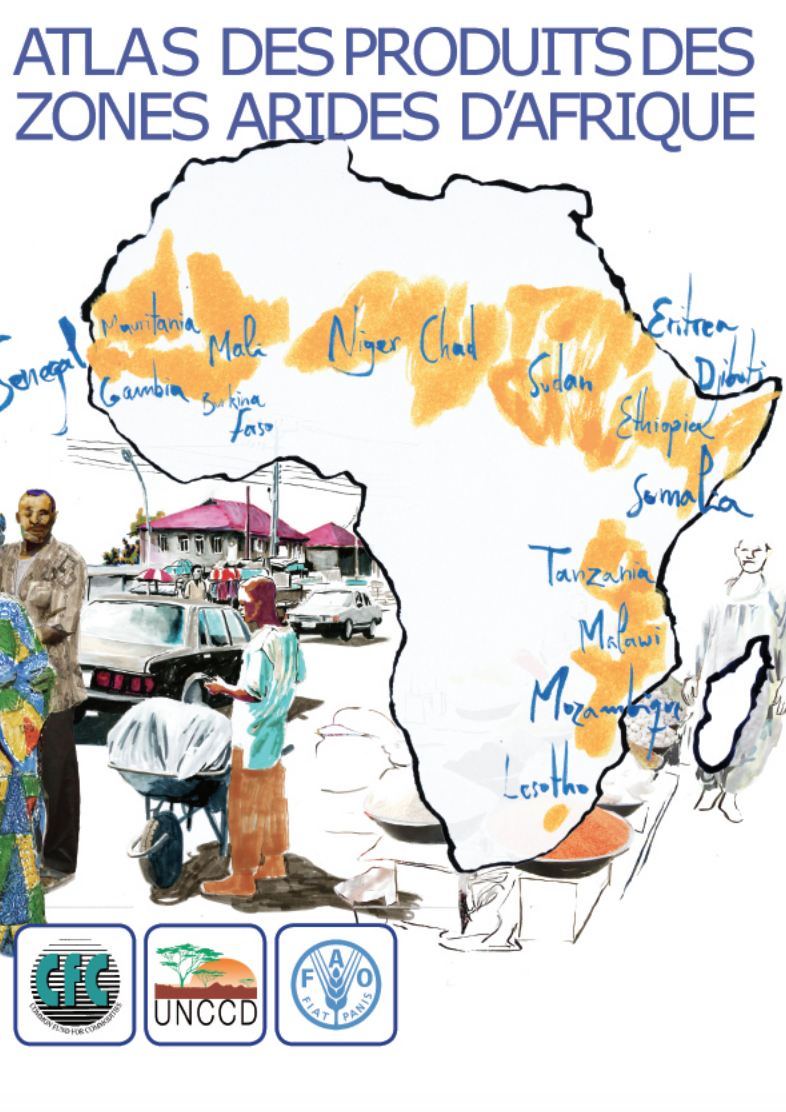UNCCD Ficha informativa: Introducción a la Convención de las Naciones Unidas de Lucha contra la Desertificación
La Convención ofrece nuevas esperanzas para luchar contra la desertificación
En las últimas décadas el problema de la degradación de tierras en las regiones de zonas secas ha seguido empeorando. La Convención promueve un nuevo método para gestionar los ecosistemas de tierras secas y administrar las aportaciones de ayuda al desarrollo.

